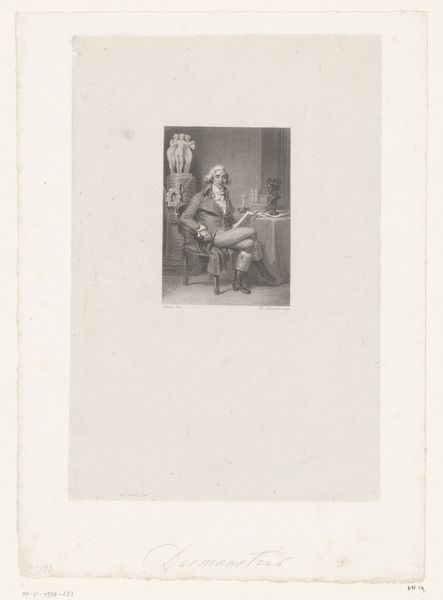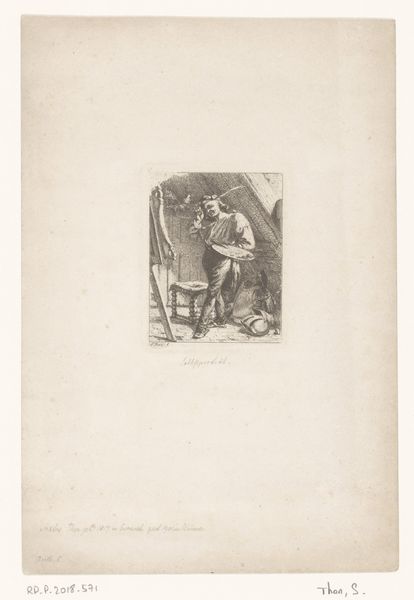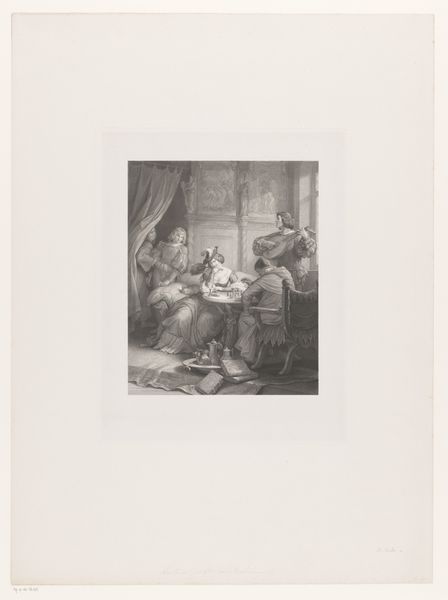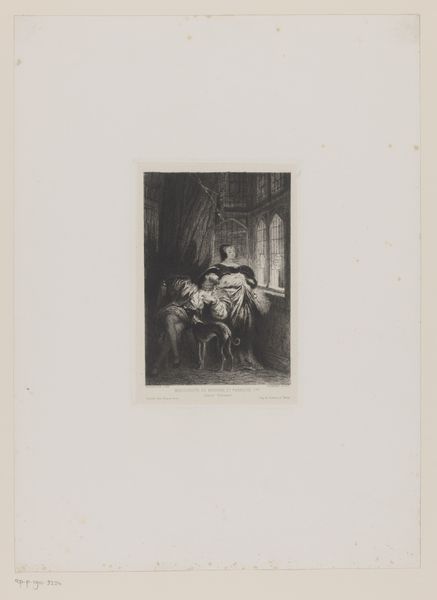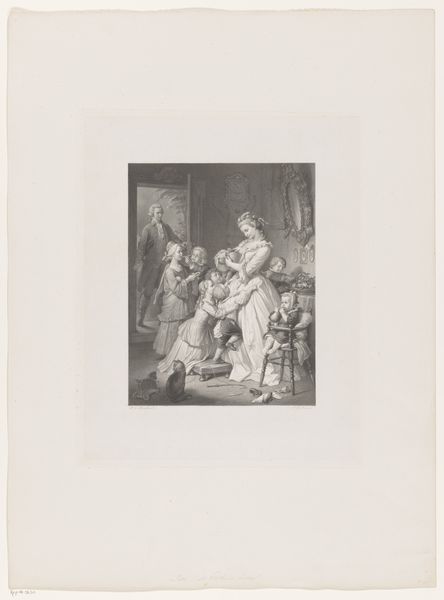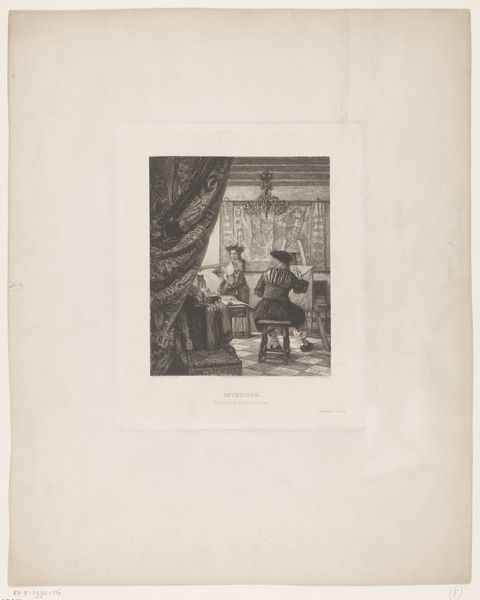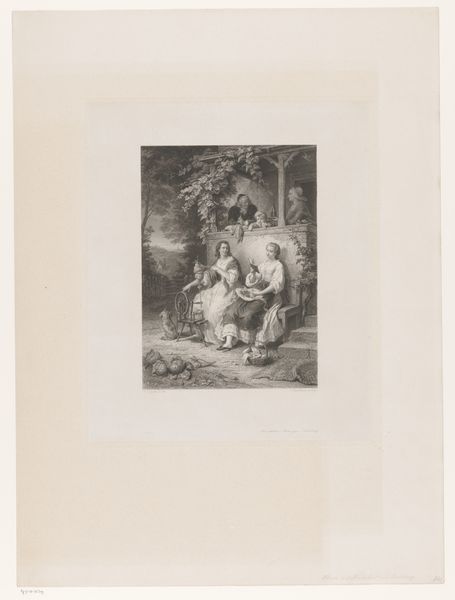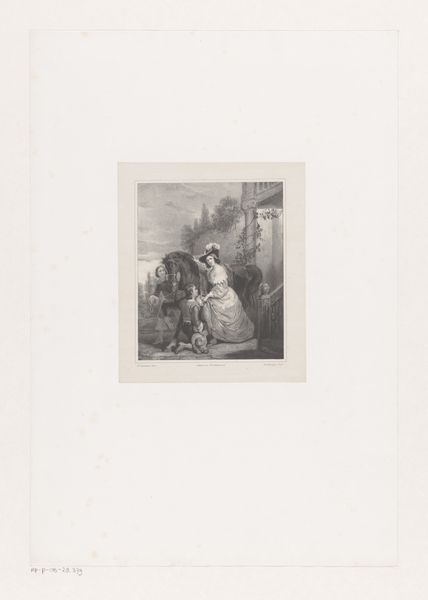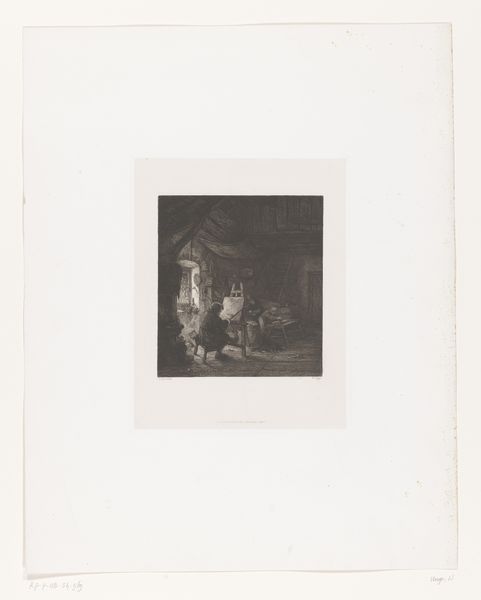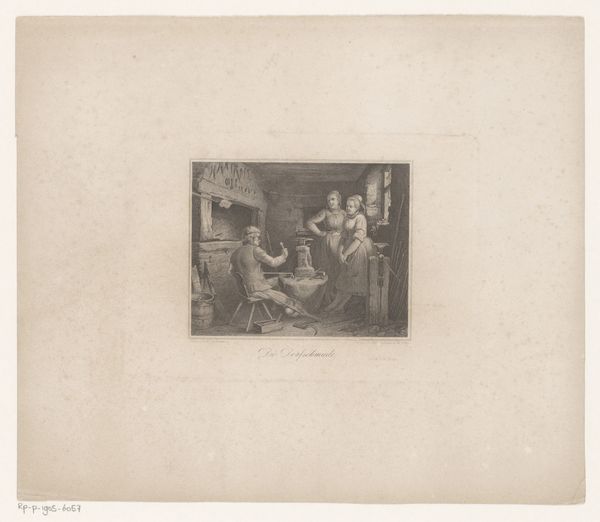
print, etching
#
pencil drawn
#
narrative-art
# print
#
etching
#
romanticism
#
genre-painting
Dimensions: height 470 mm, width 320 mm
Copyright: Rijks Museum: Open Domain
Editor: Here we have "Dronken slapende man in herberg," or "Drunk Sleeping Man in Inn," by Willem Hendrik Franquinet, made sometime between 1809 and 1854. It’s an etching, which gives it such a delicate, detailed feel. It definitely evokes a certain atmosphere—a bit grimy, a bit melancholic. What catches your eye when you look at this piece? Curator: Primarily, I'm drawn to the stark contrasts created by the etching technique itself. Observe the deep shadows against the highlighted figures, constructing a visual tension. This light does not merely illuminate; it articulates a spatial hierarchy. Note the diagonal compositional lines formed by the sleeping man’s body, counteracted by the vertical planks—a visual push and pull that activates the picture plane. Editor: I see that. The diagonal creates movement but is halted by the vertical planks. It is like he is stuck. But is there anything else, like the choice of this medium, to show, in detail, this narrative? Curator: Exactly. The choice of etching, with its capacity for fine detail, emphasizes the palpable textures—the roughness of the planks, the limpness of the man’s clothing. Consider the artist’s manipulation of line: thin and delicate for the background figures, thicker and more assertive for the sleeping man. This variance underscores their differing importance within the composition, directing our gaze and solidifying a visual structure. The figures, reduced to a study in form through these structural variations, how do they change our perception? Editor: It’s amazing how much the composition alone contributes to the narrative! Thank you. I’ll definitely be paying closer attention to line and light in future. Curator: Indeed. By analyzing its structural elements, we unveil deeper layers of meaning, finding an artwork is far more than a surface representation.
Comments
No comments
Be the first to comment and join the conversation on the ultimate creative platform.
